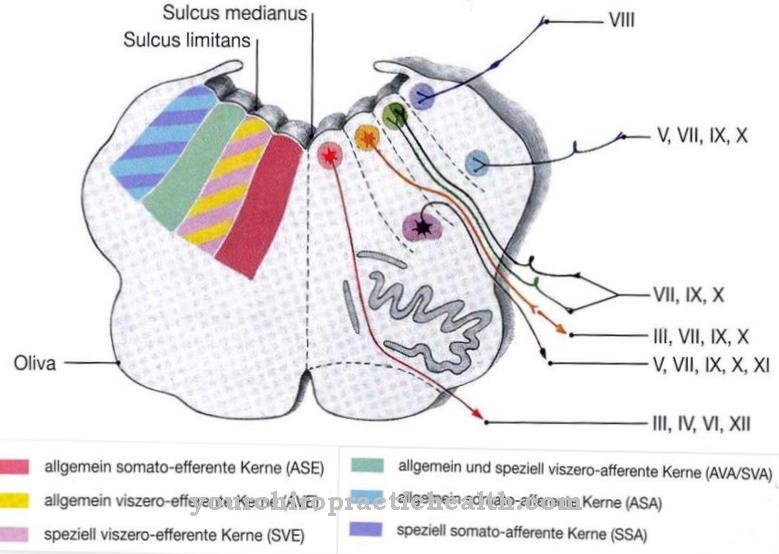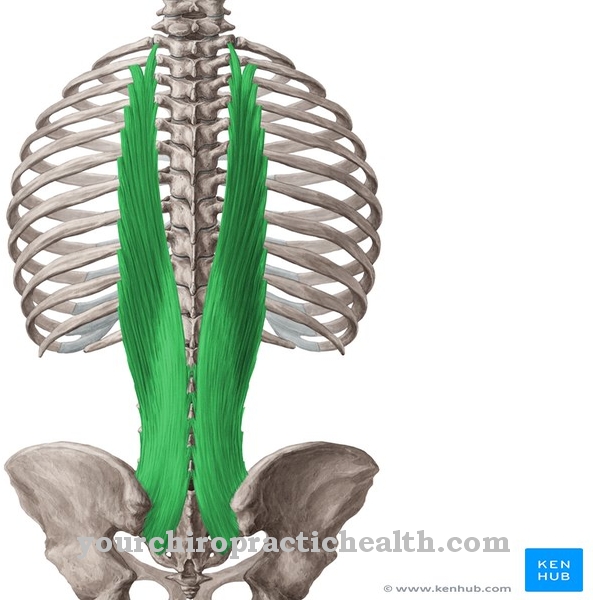Under the Urinary tract all organs and parts of organs that serve to collect and drain urine are subsumed. All organs of the (draining) urinary tract are lined with the anatomically identical structure of the mucous membrane, the urothelium. Urinary tract infections can therefore spread to all organs of the lower urinary tract.
What are the urinary tract?

The kidney calyxes form the beginning of the urinary tract, which absorb the secondary urine formed in the kidney tubules and drain it into the renal pelvis. The secondary urine (urine) is formed by resorption of the primary urine and admixtures of certain secretions in the kidney tubules.
The kidney pelvis acts as the first collection point for urine. The two ureters, designed as hollow muscular organs, which connect the two renal pelvis with the urinary bladder, absorb the urine and transport it into the bladder. This process happens involuntarily through regular peristaltic contractions of the ureters.
The urine is first collected in the urinary bladder and, when it is filled accordingly, a feeling of urgency is triggered. The urine can then be discharged into the environment via the urethra. In contrast to the involuntary drainage of urine from the renal pelvis to the urinary bladder, urination through the urethra is subject to the will.
Anatomy & structure
The kidney calyx and the renal pelvis are lined with the mucous membrane, the urothelium, which is characteristic of organs of the urinary tract. The ureters, which absorb the urine from the renal pelvis and transport it into the urinary bladder, are also lined with the urothelium. The two ureters consist of about 30 cm long muscle tubes with a diameter of about 7 mm.
The ureters are surrounded by a layer of smooth muscle cells that respond to signals from the autonomic nervous system and are not subject to volition. On the outside, the ureters are covered with a layer of connective tissue. At the point of entry into the bladder, the ureters run a short distance in the bladder wall. The urinary bladder is a hollow organ that is used to collect and temporarily store urine.
The lamina propria, a layer of connective tissue and collagen fibers, gives the bladder its firmness. The emptying takes place - voluntarily - via the urethra (urethra). At the point where the urethra joins the bladder, there are two sphincters, one of which is controlled vegetatively by smooth muscles.
Function & tasks
The calyxes collect the secondary urine, which continuously drips from the tubules into the calyxes and forward it to the renal pelvis. The renal pelvis serves as the first intermediate store for the secondary urine. At the entrance to the renal pelvis, the ureters absorb the urine and transport it further into the urinary bladder.
The anatomical design of the ureters as muscle tubes is necessary in order to be able to drain accumulated secondary urine from the renal pelvis, even in a lying position, and if necessary against gravity, into the urinary bladder.
The muscle tubes, which consist of smooth muscles, can perform their tasks via peristalsis, a dynamic and reflexive contraction of the ureter. The unconscious contractions always run from the exit of the renal pelvis to the entrance of the urinary bladder and convey the urine from the renal pelvis almost forcibly into the urinary bladder.
The entrance of the ureters into the urinary bladder is comparable to a check valve. It ensures that urine can only pass in one direction. Backflow (reflux) into the ureters or even into the renal pelvis is usually impossible.
Home remedies ↵ for bladder
inflammation
The urinary bladder performs the function of a urine collection container and can hold up to max. Store 1.5 l (man) and up to 0.9 l (woman) urine. The urge to urinate usually occurs when the filling level is between 300 ml and 500 ml. The emptying process can normally be controlled at will.
Illnesses & ailments
The most common disease of an organ of the lower urinary tract is a cystitis or urinary tract infection, which occurs more often in women than in men due to the much shorter urethra. The infections caused by bacteria can spread to the ureters and even the renal pelvis and cause painful pelvic inflammation.
Urinary stones can cause another problem. If urinary stones develop in the renal pelvis, the body tries to first move the stones into the bladder via the ureter. Usually the stones get stuck in the entrance area of the ureter, which stimulates the ureter to peristaltic contractions in order to transport the stone further. These unconscious and voluntarily uncontrollable contractions lead to severe pain and are known as renal colic.
Hereditary malpositions of the ureters are also known, especially at the entrance to the urinary bladder. Since all organs of the lower urinary tract are lined with the same, identically structured, mucous membrane, urothelial carcinomas can develop in all organs of the lower urinary tract, which, if diagnosed early, can be removed by a minimally invasive procedure and then given chemotherapy.



























